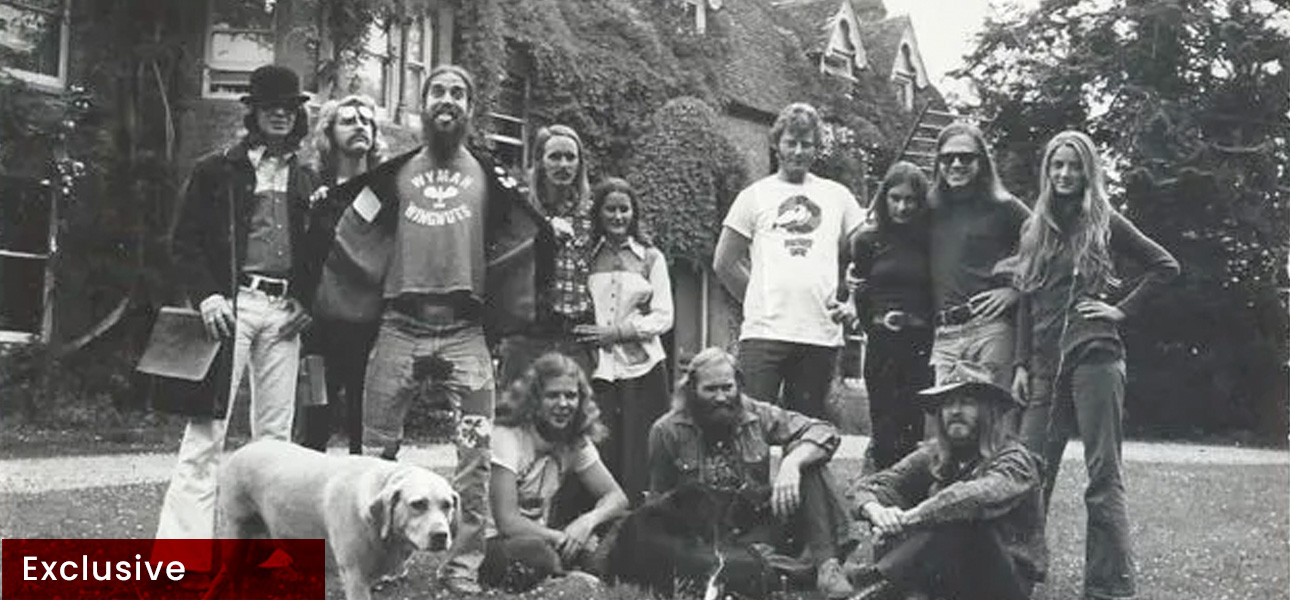Headley Grange

With its rich history and unique acoustic properties, Headley Grange is an essential part of the Led Zeppelin sound – influencing everything from the sound of John Bonham’s drums to Page’s obsession with the occult.
Nestled in the Hampshire countryside, the grange was built in 1795 at a time when just across the channel France was feeling its way through the latter years of a revolution. When it first opened its doors in the midst of the coldest winter on record, Headley Grange was used as a workhouse for the poor, infirm, and orphaned people from the surrounding villages. Over the next 30 years or so, the house developed such a bad reputation that, when riots broke out in 1830, it was sacked by the villagers. Before the ringleaders were arrested and transported to Australia, rioters broke down the door of the grange, turned out the occupants, burned the furniture, and pulled down the roof, leaving the house in a state of disrepair until the 1870s when Thomas Kemp bought it for the princely sum of £420. Over the next 90 years or thereabouts, the grange swapped hands numerous times. Then in the late ’60s, it was transformed into a recording studio for bands like Fleetwood Mac, Genesis and, of course, Led Zeppelin.
When the stadium rockers pulled up outside Headley Grange in the winter of 1970 to record Led Zeppelin IV, it was almost as cold as it had been back in 1795. Ahead of them, the grange loomed above the frost-covered lawns. With its central Gothic stone porch, ivy-covered walls, and latticed windows it looked the very picture of Hammer-horror dread, having been left to rot for a number of years. When the band got inside – leaving the roadies to haul their many pieces of gear inside with frost-bitten fingers, they found that the heating didn’t work and that the wallpaper was peeling off the walls.
To fend off the unbearable cold in those first days of Led Zeppelin IV, the team ensured a fire was roaring in the sitting room at all times, where Plant would eventually take to an armchair to write the lyrics to ‘Stairway To Heaven’. You can feel the influence of Headley Grange in the idyllic imagery Plant uses throughout the song. “I was trying to bring in the beauty and remoteness of pastoral Britain,” Plant told recalled in a 2016 interview. “It developed into something I could not imagine.” Even the cover art of Led Zeppelin IV, which features a local man, Brusher Mills, collecting long strands of willow, seems to hark back to an imagined, pre-industrial England. Headley seems to represent for Led Zeppelin a place where the intrusions of the modern world simply slipped away.
The relaxed and isolated atmosphere at Headley Grange allowed Led Zeppelin to dabble in a number of experimental production techniques that they otherwise wouldn’t have had time for. Bonham, for example, had been recording his drum parts in a separate booth in one of the side rooms, but when he ordered a new kit to Headley Grange, his technician decided to set it up in the huge main entrance hall. Bonzo came out of a session to see his new kit had arrived and promptly started partying. “It was this huge expanse,” Page said of the sound emanating from Bonham’s kit. “We were getting the drums reflecting off of the walls, giving this wonderful ambience to the drums. You can hear the reflective surfaces, it’s really live and ambient.” Page asked the studio engineers to set up mics around the entrance hall to capture the rooms natural acoustics. The Cavernous drum sound they recorded that day would go on to form the backbone of ‘When The Levee Breaks’.
As well as sparking a number of innovative production techniques, Led Zeppelin’s isolation at Headley Grange also resulted in a couple of paranormal sightings. Jimmy Page was already deep into the occult at this time, having become fascinated with the work of Aleister Crowley. One such sighting went on to inspire ‘Back Dog’ after Page noticed a black labrador “hanging around Headley Grange”
Without Headley Grange, Led Zeppelin IV wouldn’t be the same record. This unique house gave Page, Plant, Bonham and Jones room to breathe, allowing them to approach their fourth studio album from a new angle. Is it any wonder that it is so often named the best rock album of the 1970s? Led Zeppelin IV captures not only the magnificent musicianship of Zeppelin’s members but also evokes the powerful atmosphere at Headley Grange.
